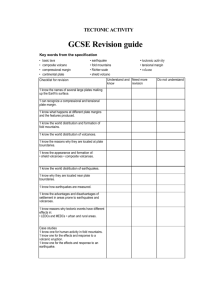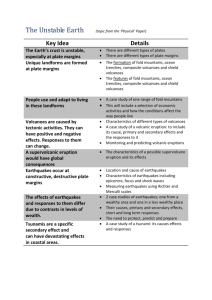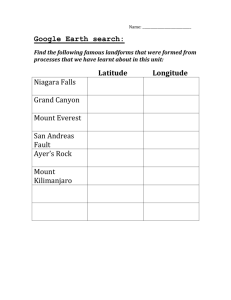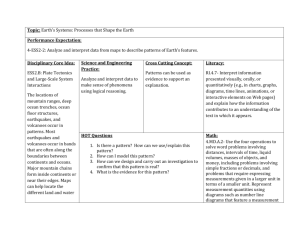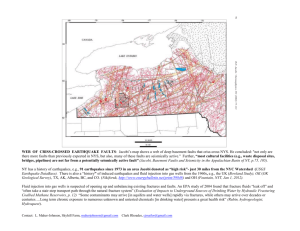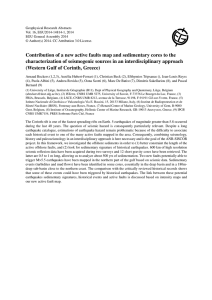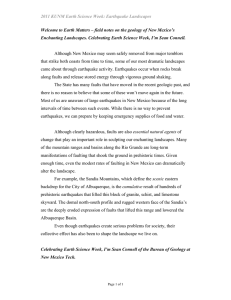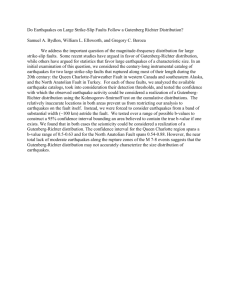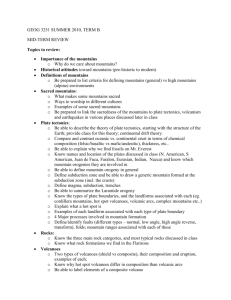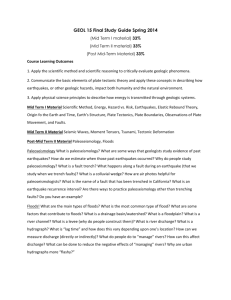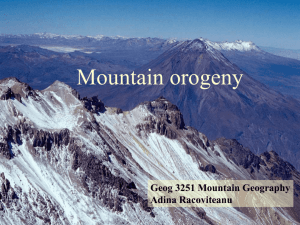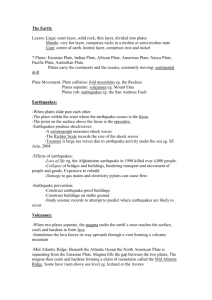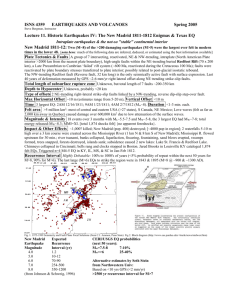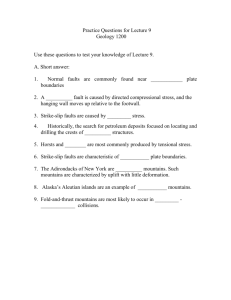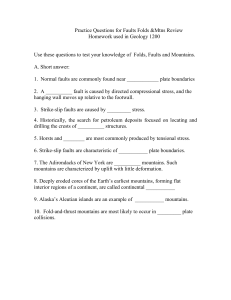Diverging Boundary
advertisement
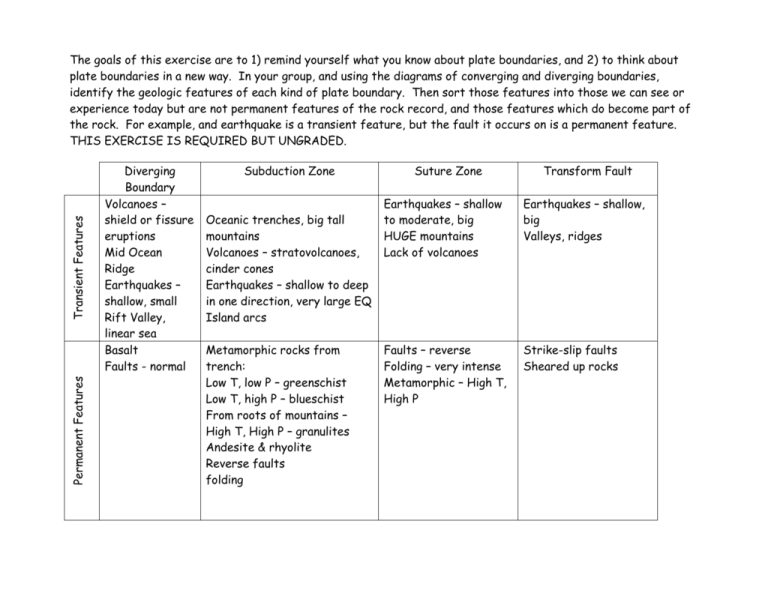
Permanent Features Transient Features The goals of this exercise are to 1) remind yourself what you know about plate boundaries, and 2) to think about plate boundaries in a new way. In your group, and using the diagrams of converging and diverging boundaries, identify the geologic features of each kind of plate boundary. Then sort those features into those we can see or experience today but are not permanent features of the rock record, and those features which do become part of the rock. For example, and earthquake is a transient feature, but the fault it occurs on is a permanent feature. THIS EXERCISE IS REQUIRED BUT UNGRADED. Diverging Boundary Volcanoes – shield or fissure eruptions Mid Ocean Ridge Earthquakes – shallow, small Rift Valley, linear sea Basalt Faults - normal Subduction Zone Oceanic trenches, big tall mountains Volcanoes – stratovolcanoes, cinder cones Earthquakes – shallow to deep in one direction, very large EQ Island arcs Metamorphic rocks from trench: Low T, low P – greenschist Low T, high P – blueschist From roots of mountains – High T, High P – granulites Andesite & rhyolite Reverse faults folding Suture Zone Transform Fault Earthquakes – shallow to moderate, big HUGE mountains Lack of volcanoes Earthquakes – shallow, big Valleys, ridges Faults – reverse Folding – very intense Metamorphic – High T, High P Strike-slip faults Sheared up rocks




